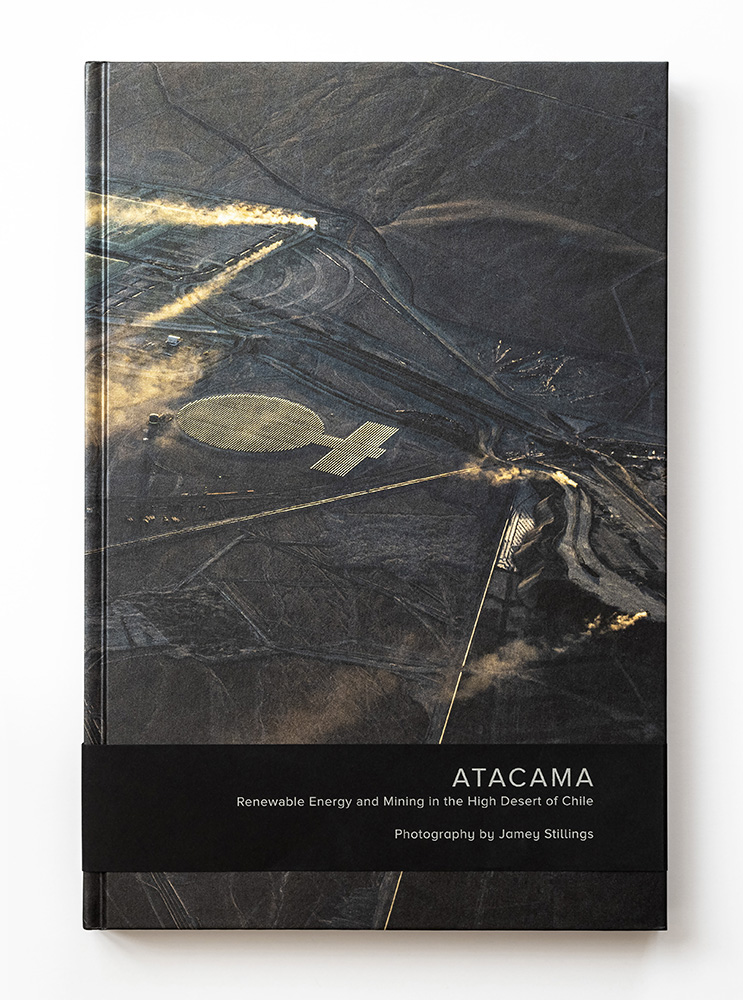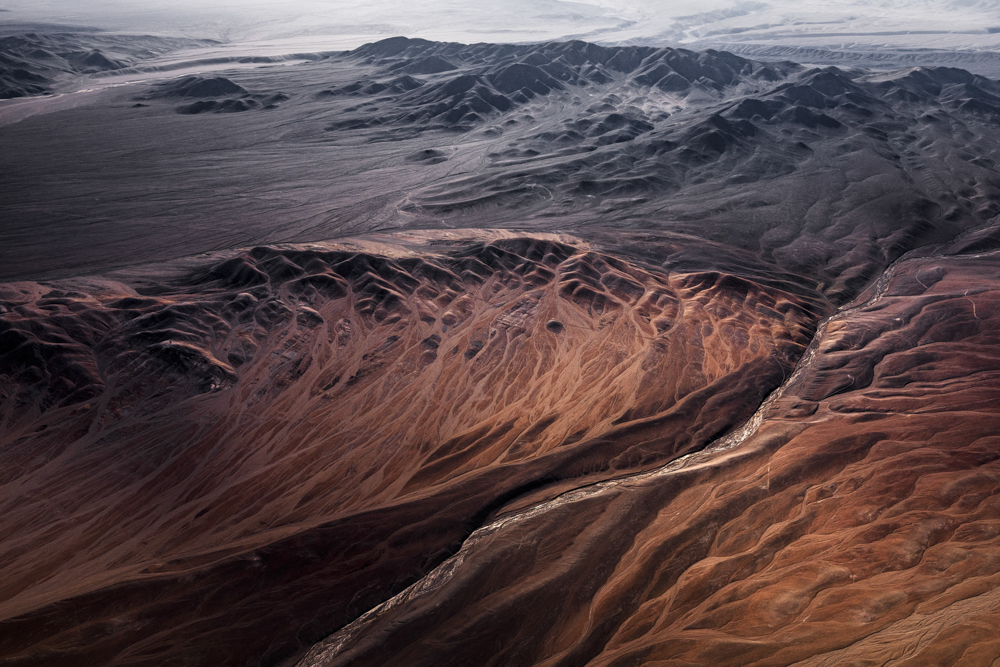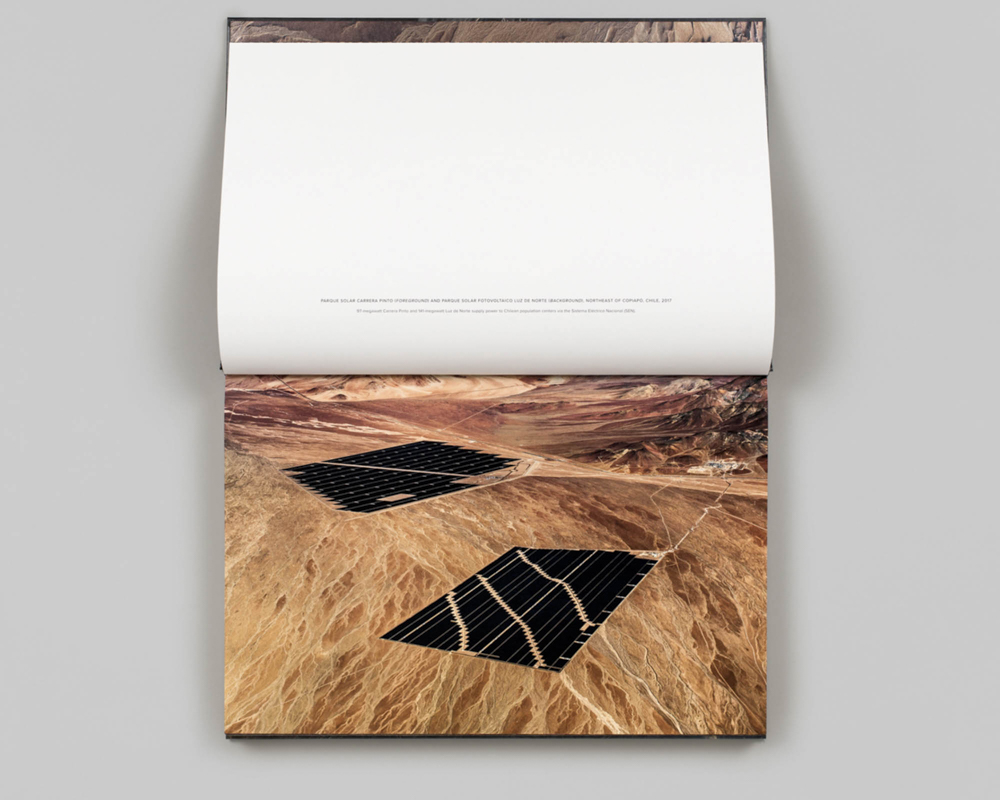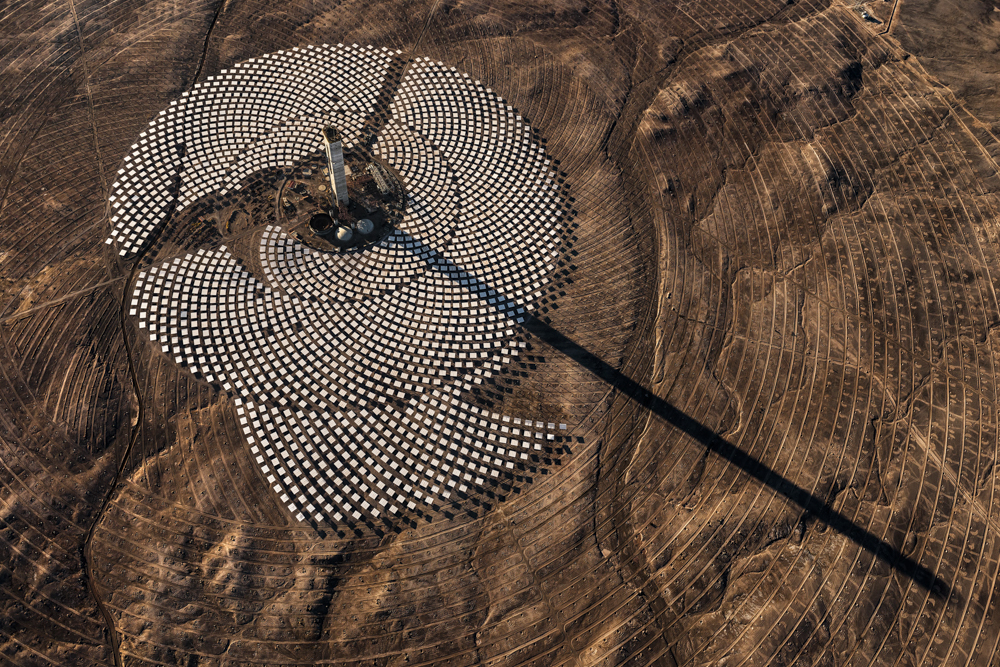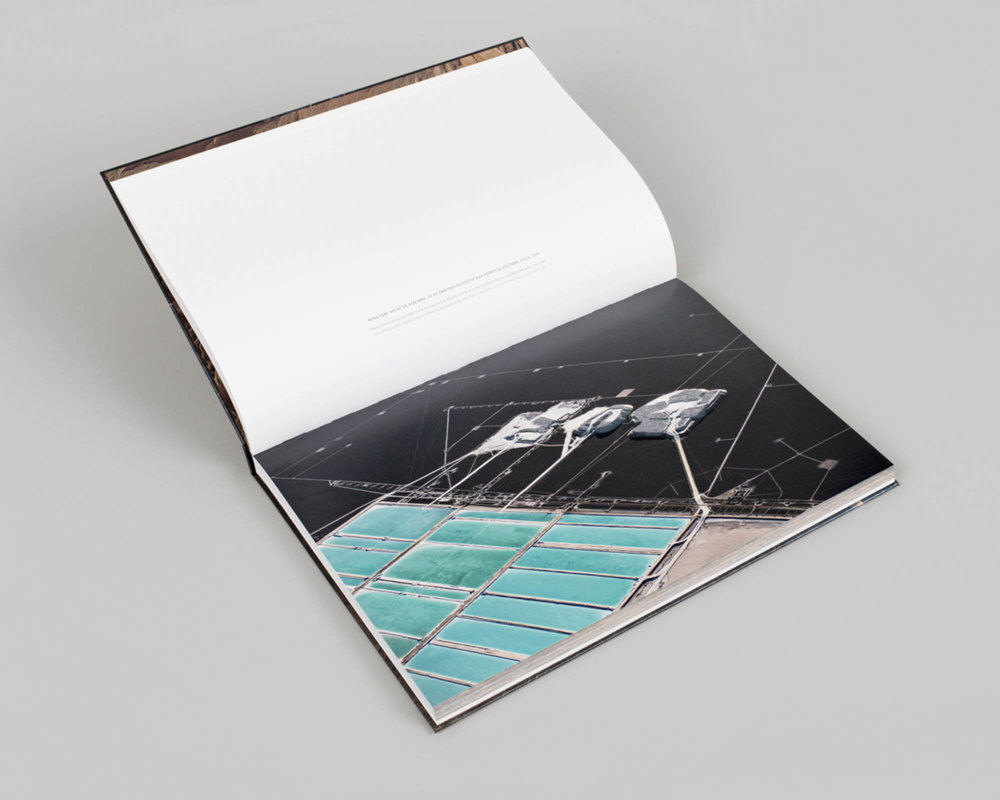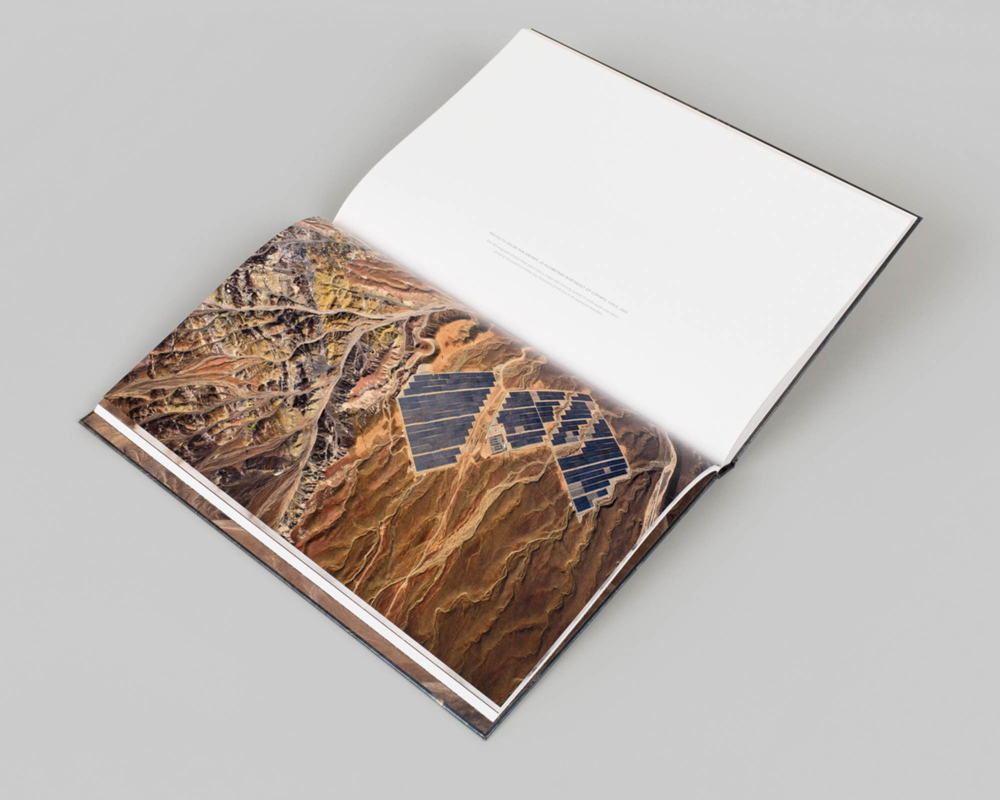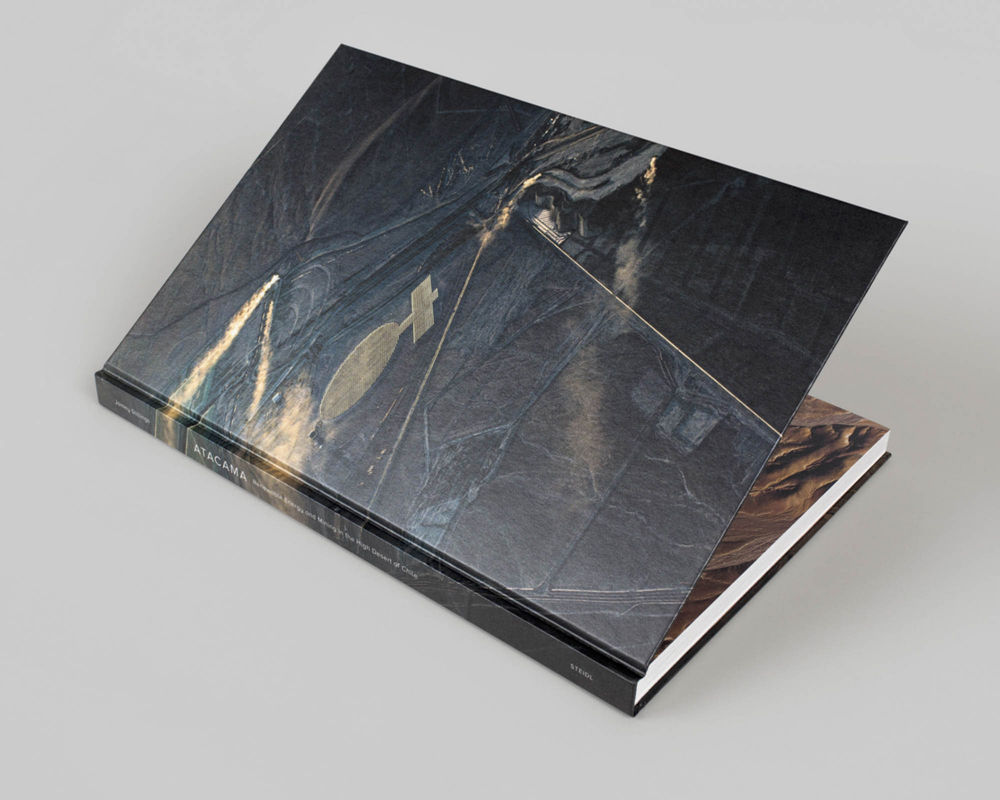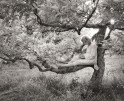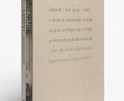Jamey Stillings: Atacama
Jamey Stillings continues his long-term project Changing Perspectives: Renewable Energy and the Shifting Human Landscape with a new publication ATACAMA: Renewable Energy and Mining in the High Desert of Chile (Steidl, 2023). From an airplane or helicopter, he photographs Chile’s copper and lithium mining operations and renewable energy systems, as well as the surrounding landscape of the Atacama Desert.
There is a distinct beauty to his photographs that juxtaposes environmental concerns with visual play. Holding the book ATACAMA in my hands for the first time, the deep blue and brown hues on the cover photograph emit a subtle glow due to the silver paper on which it’s printed. The same paper is repeated on the book’s end sheets. Upon opening, metallic reddish-brown hues mimic the copper within the soil. A detail of the photograph captured over the Atacama Desert appears to be dripping like paint moving diagonally across a canvas. Barely perceivable, a detailed network of thin marks on the surface of the land (possibly vehicle tracks) often lead to dead ends.
Unlike these marks, Stillings’ photographs are never about dead ends or impasses. In fact, his work represents quite the opposite. His lifelong concerns for environmental sustainability, with a special emphasis on renewable energy, remain at the core of his artistic practice.
I asked him “Why do you do the work you do?” He answered “I am a stubborn optimist, committed to using my artistic sensibilities to seek solutions that will allow humanity to survive and thrive on planet Earth.”
ATACAMA includes essays in both English and Spanish by renowned writers Paul Hawken, Mark Sloan, and Sergio Missana, along with an artist statement, a map, and an energy-mining glossary to complement the visuals. The book design is by David Chickey.
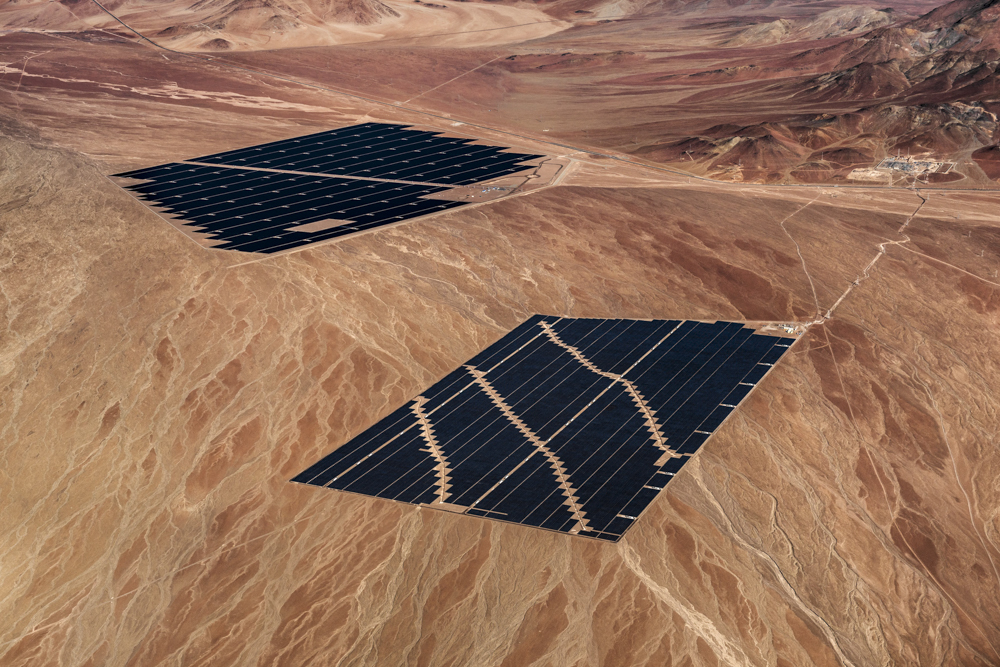
© Jamey Stillings, Parque Solar Carrera Pinto and Parque Solar Fotovoltaico Luz de Norte, 60 kilometers northeast of Copiapó, Chile
I have always been deeply interested in and fascinated with the intersections of nature and human activity. These intersections hold great visual, philosophical, environmental, and political energy as they urge me to ponder our individual and collective relationship with the world. Since the beginning of the Industrial Revolution and the Age of Oil, we have profoundly changed the Earth on an unprecedented scale.
Climate change, unrestrained resource use, and population growth threaten the global ecosystem and challenge us as never before. The task is not just to define the problems we face, but to proffer opportunities and solutions that provide sustainable models for future life on the planet. I am working to advance and expand my photographic survey of renewable energy development in natural, rural, and urban landscapes. In doing so, I further my efforts to mitigate climate change and build a viable world for future generations.
My photography focuses on our essential commitment to developing and implementing solutions within the energy/water/food nexus. Since 2010, through Changing Perspectives: Renewable Energy and the Shifting Human Landscape, I have documented renewable energy development in the American West, Japan, Uruguay, and Chile. From a predominantly aerial perspective, utilizing helicopters and airplanes, I explore the intersections of nature and human activity from the sparse landscapes of the Mojave Desert to the dense urban/rural landscapes of Japan. Beyond this photographic exploration, the goal is to share the results of my endeavors with people of diverse backgrounds and geography, to intrigue, inform, stimulate, provoke, and actively participate in our collective quest to sustainably extend our tenure on Earth.
Atacama: Renewable Energy and Mining in the High Desert of Chile (Atacama), was the most ambitious Changing Perspectives project to date. Initiated in 2017, with another significant round of work completed in 2022, Atacama examines the growing relationship between mining and renewable energy development in the Atacama Desert from an aerial perspective. Chile is the world’s largest producer of copper and is second in lithium production. Historically, the mining industry depended on imported fossil fuels—coal, diesel, and natural gas—for its power. Over the past decade, the Atacama’s tremendous solar and wind energy potential is being developed as the cost of renewable electricity production falls. Major Chilean mines have signed power purchase agreements to convert operations to 100% renewable energy for their electricity requirements. Paradoxically, the Chilean mining industry is reducing its carbon footprint as the world demands more copper, lithium, and other minerals to transition away from fossil fuel consumption.
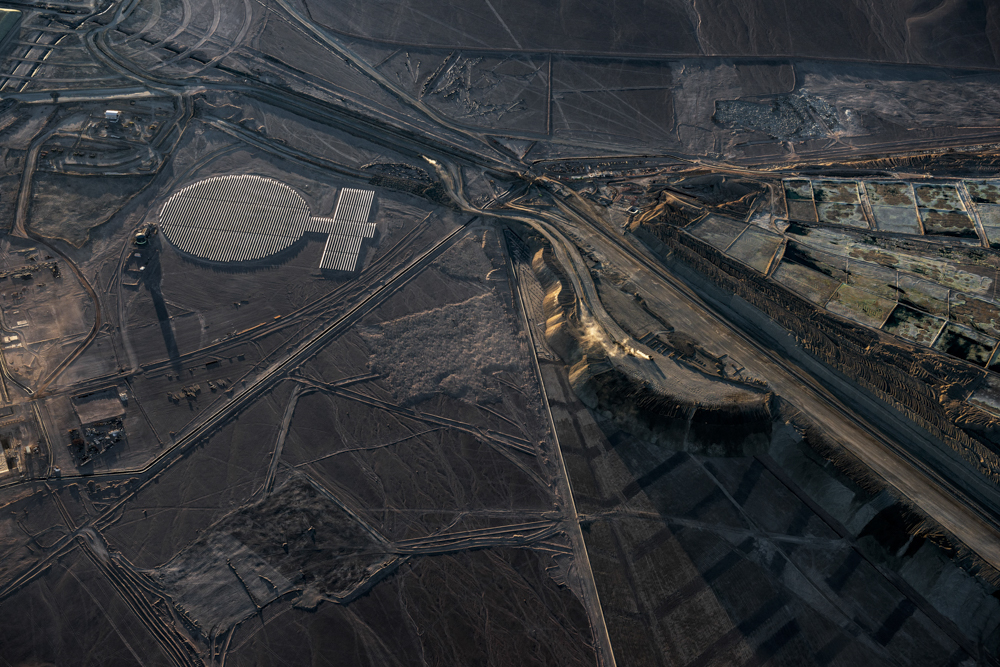
© Jamey Stillings, Pampa Elvira Solar, Minera Gaby, Chile A 27.5-megawatt solar-thermal array heats water for the electro-winning process at nearby Minera Gaby
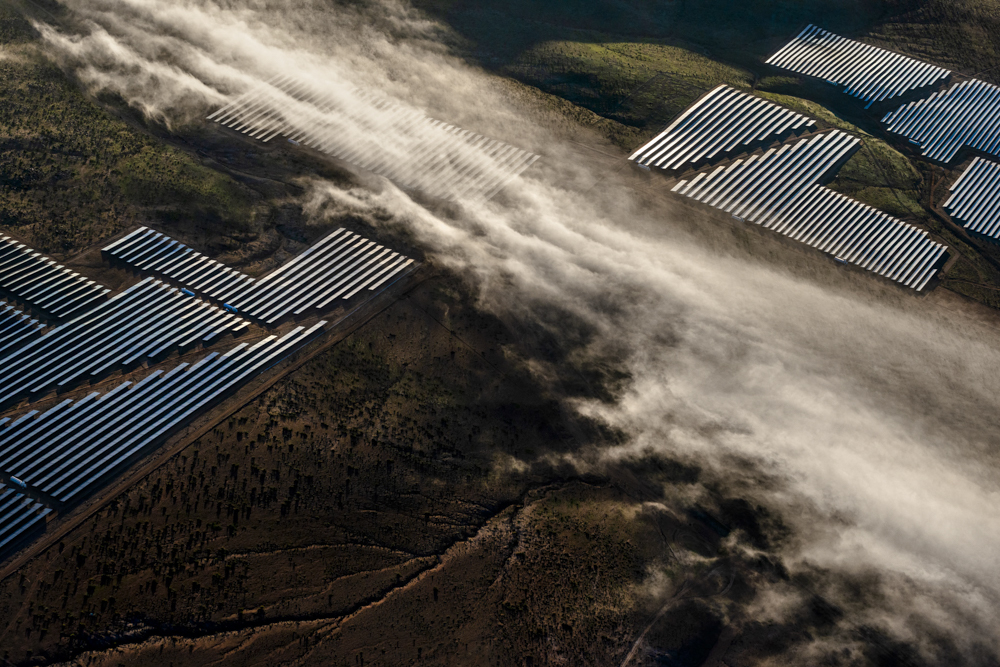
© Jamey Stillings, El Romero Solar, Atacama Desert, Chile A 246-megawatt photovoltaic plant supplies 80-megawatts (100%) of renewable energy to the Google Data Center in Chile
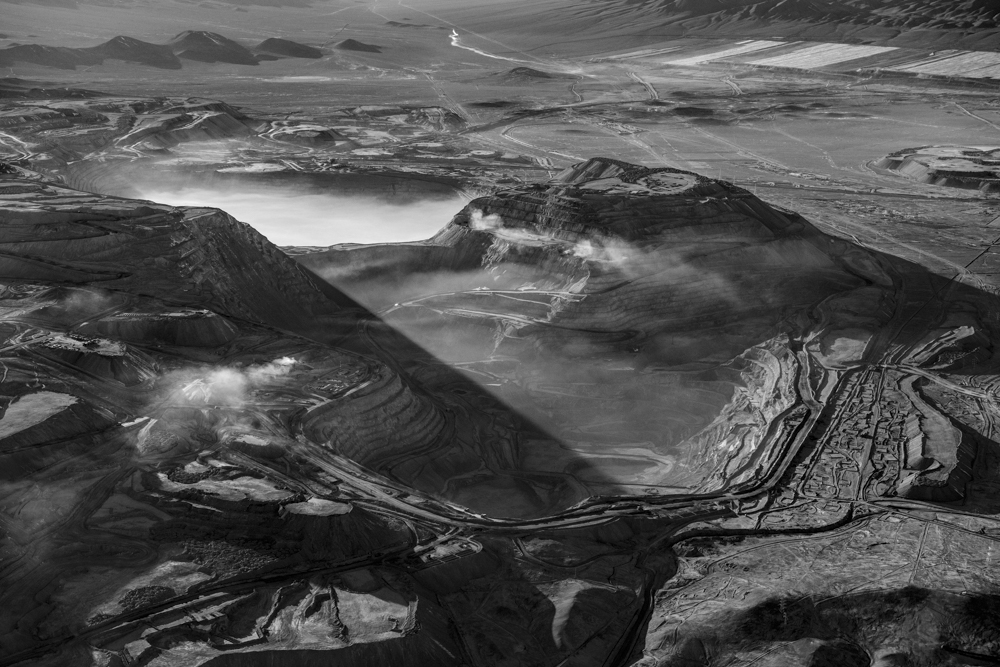
© Jamey Stillings, Mina Zaldívar, 175 kilometers southeast of the city of Antofagasta, Chile In 2020 this became the first copper mine to operate with 100% renewable energy including wind, solar, and hydro sources
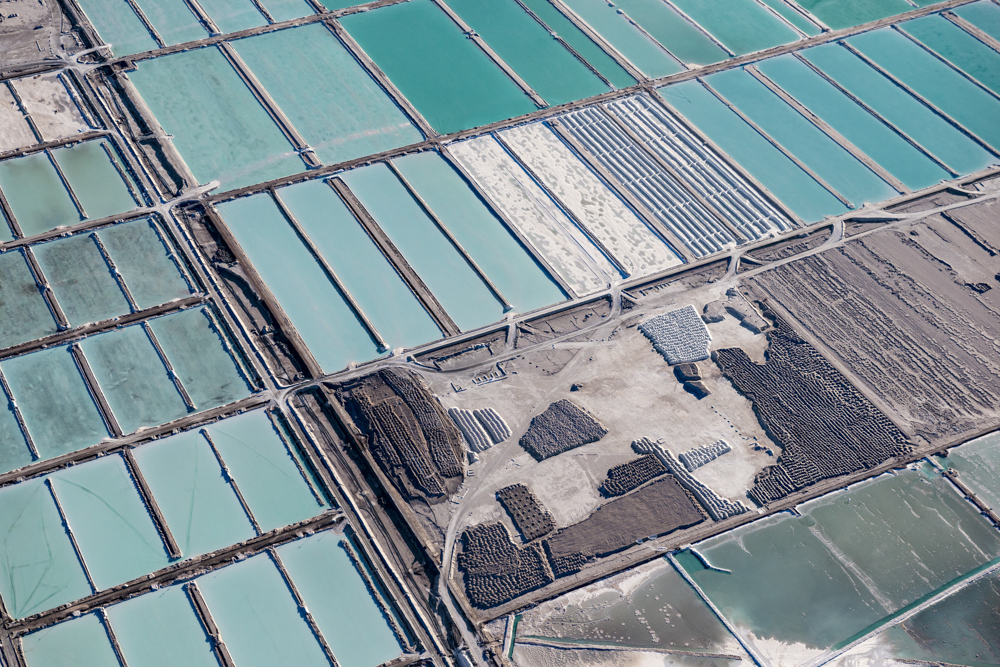
© Jamey Stillings, Mina SQM lithium mine, Salar de Atacama, Chile This lithium mine contains one of the world’s largest and best brine lithium reserves
Jamey Stillings’ work spans fine art, documentary, and commissioned projects. A passionate curiosity about people, cultures, technology, and the environment continues to be a guiding force in his photography and life. Increasingly, he seeks projects that provide the opportunity to study a subject in depth. This might be realized by documenting the evolution of a subject over a period of years or by recording the intensity of a single day. Within a diverse range of photographic interests, he continues to broaden his look at issues of sustainability and climate change with a special focus on renewable energy development.
Exhibited internationally, his work is held in the collections of the United States Library of Congress; Museum of Fine Arts, Houston; Los Angeles County Museum of Art; the Nevada Museum of Art; and numerous private collections. Stillings won the International Photography Awards Professional Book Photographer of the Year 2016 for his book The Evolution of Ivanpah Solar (Steidl, 2015).
He lives in Santa Fe, New Mexico, USA, with photographer Esha Chiocchio (his wife) and their two children.
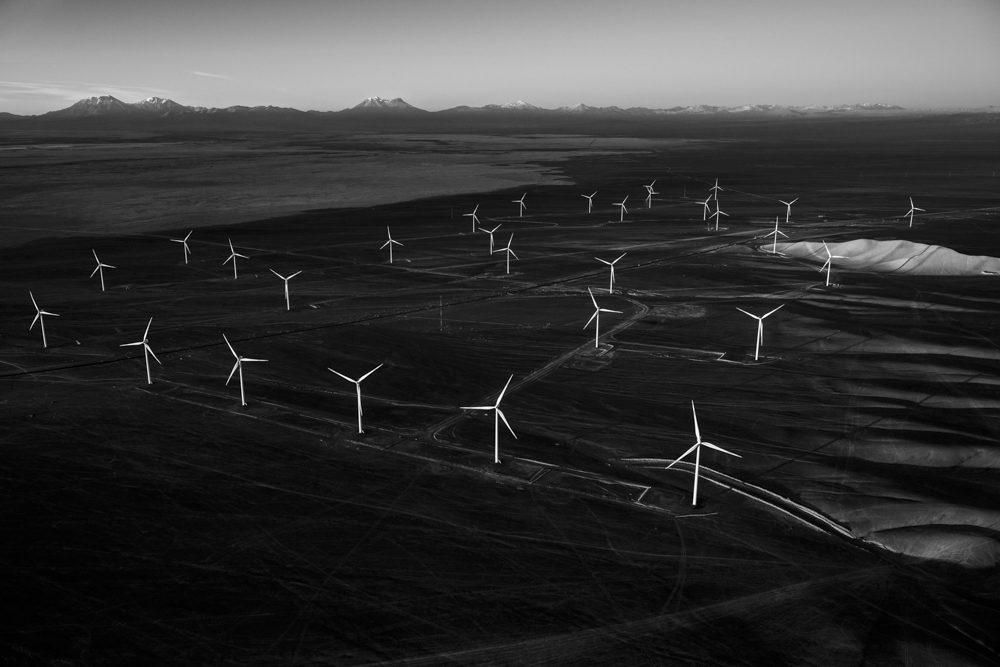
© Jamey Stillings, Parque Eólico Valle de los Vientos, near Calama, Chile A 90-megawatt wind farm comprised of 45 wind turbines
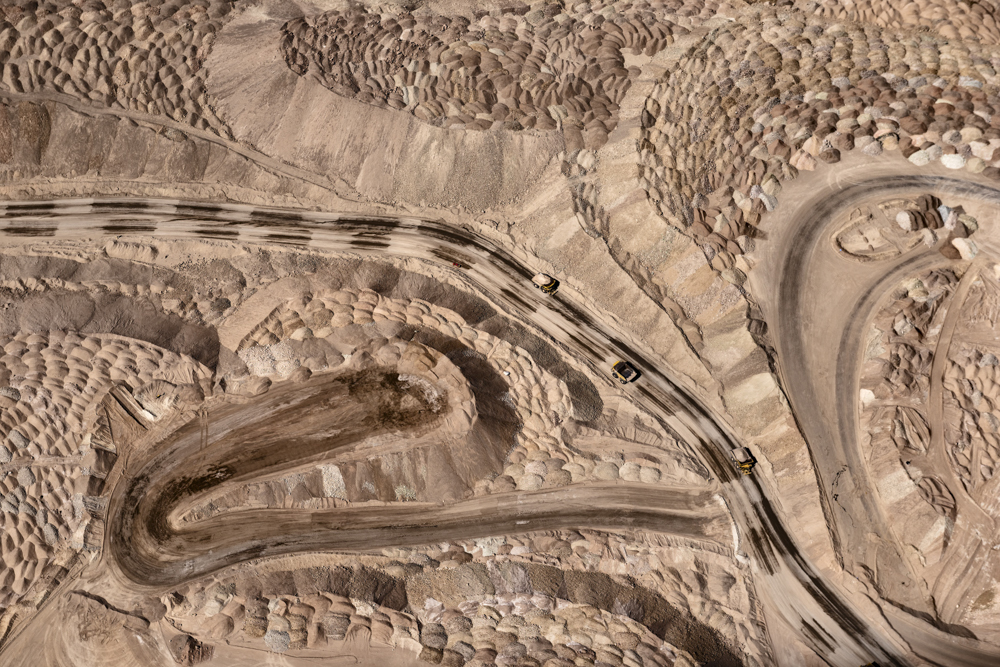
© Jamey Stillings, Mina Chuquicamata, 15 kilometers north of Calama, Chile A section of tailings and overburden exemplify the extensive amount of materials moved during the mining process
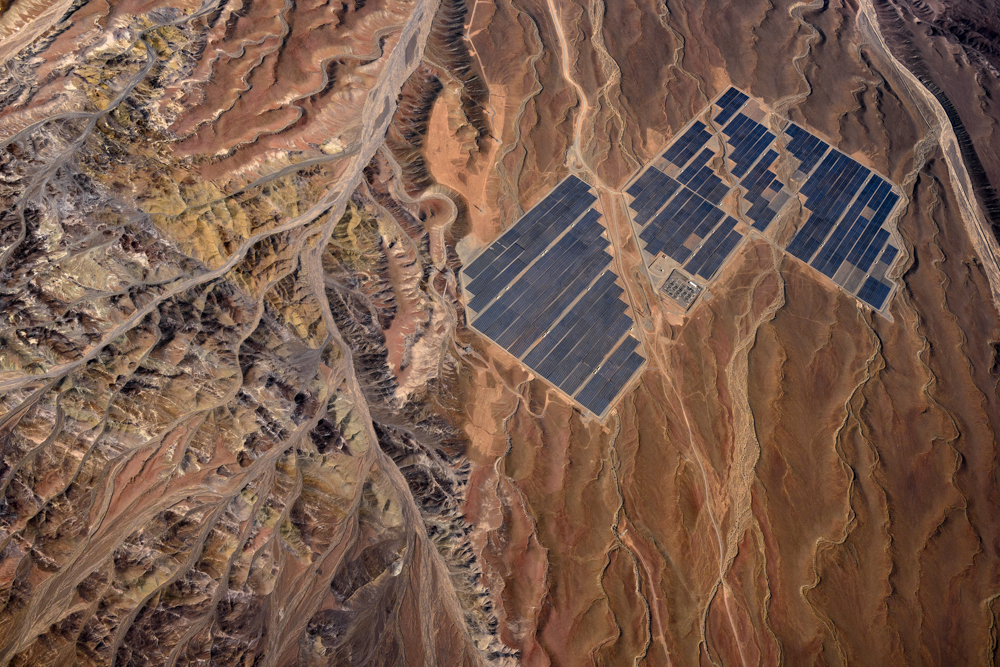
© Jamey Stillings, Proyecto Solar San Andrés, 25 kilometers northeast of Copiapó, Chile A 50-megawatt photovoltaic plant that uses a single-axis tracking system in north-south orientation so that the panels follow the movement of the sun in an east-west direction
Posts on Lenscratch may not be reproduced without the permission of the Lenscratch staff and the photographer.
Recommended
-
Eli Durst: The Children’s MelodyDecember 15th, 2025
-
Kinga Owczennikow: Framing the WorldDecember 7th, 2025
-
Richard Renaldi: Billions ServedDecember 6th, 2025
-
Ellen Harasimowicz and Linda Hoffman: In the OrchardDecember 5th, 2025
-
Linda Foard Roberts: LamentNovember 25th, 2025

